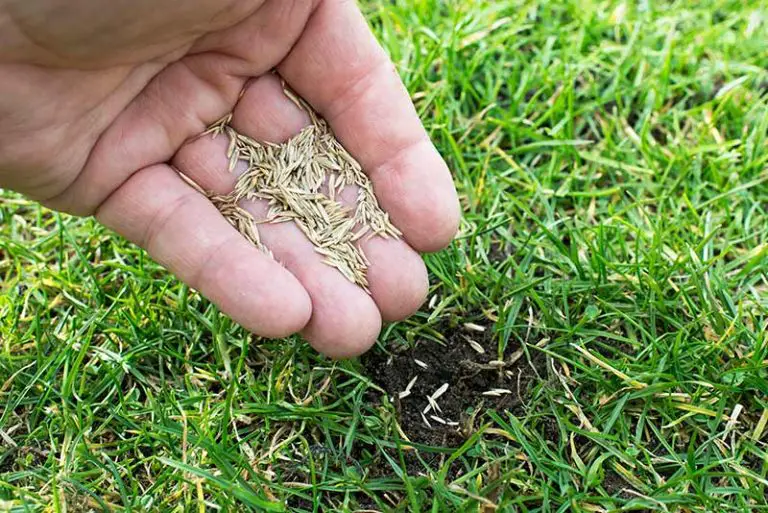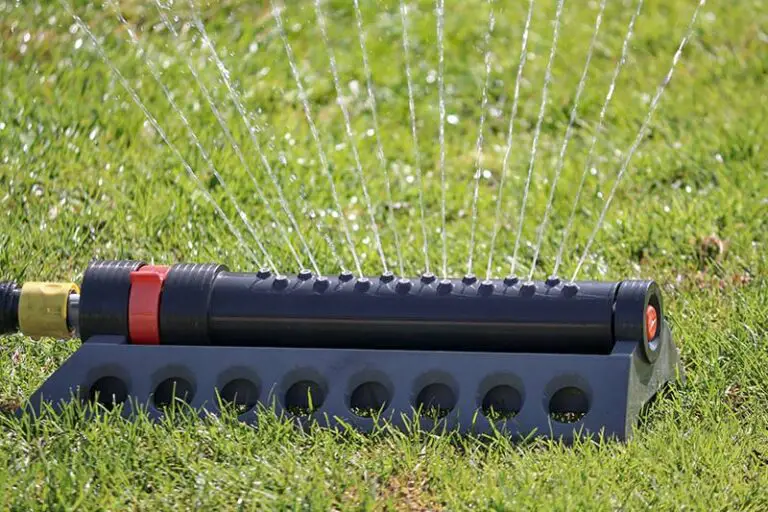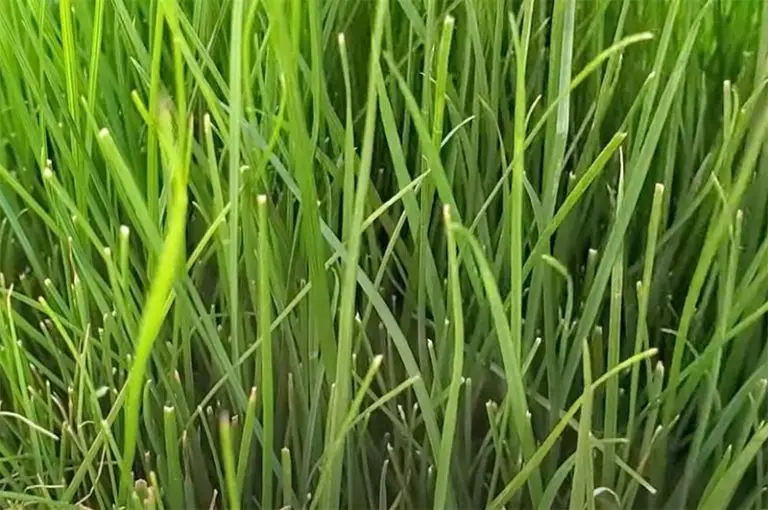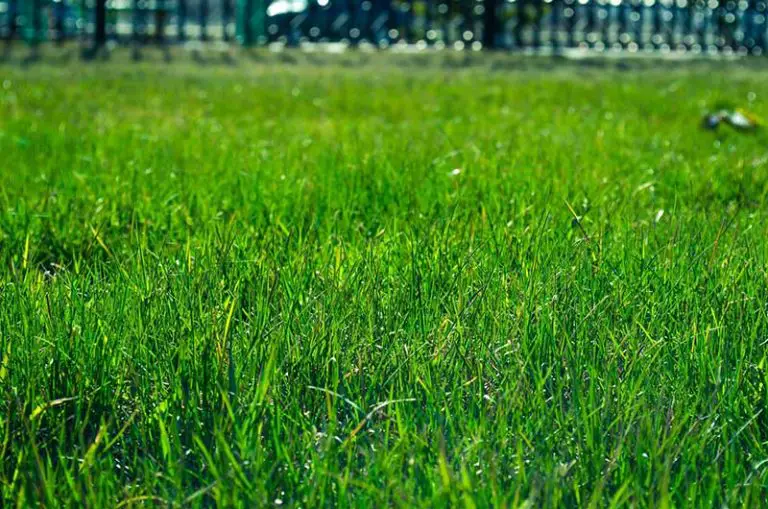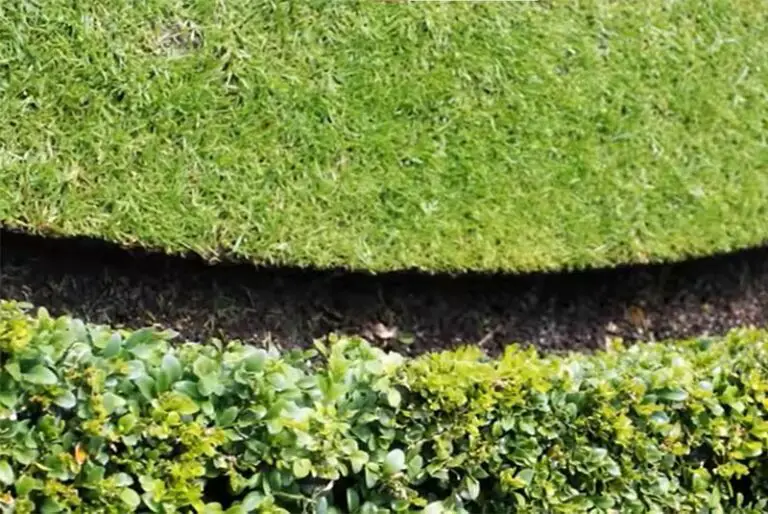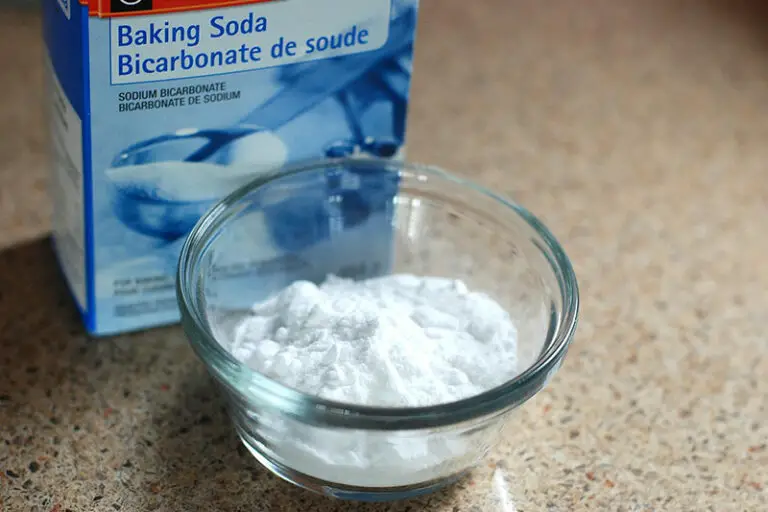Softest Lawn Grass: Best Types for Bare Feet
As soon as the warm weather hits, you’ll want to get out and start enjoying your lawn as nature intended. Unfortunately, it’s difficult to frolic barefoot on a lawn full of dry, crunchy, or otherwise coarse grass. Creating a lush, dense lawn that feels soft underfoot relies on having a soft grass species maintained to optimal health.
The softest lawn grasses include zoysia grass, buffalo grass, Bermuda grass, Kentucky bluegrass, and perennial ryegrass. All of these grasses create a dense lawn full of fine-bladed grass that will feel soft on bare feet. With that said, the softest lawns are those with healthy grass; taking care of your grass is just as important as choosing a naturally soft species.
What Makes Grass Soft on Bare Feet?
The health of your grass, the grass species, and the natural density of your grass species are all factors that will affect how soft your grass feels on bare feet.
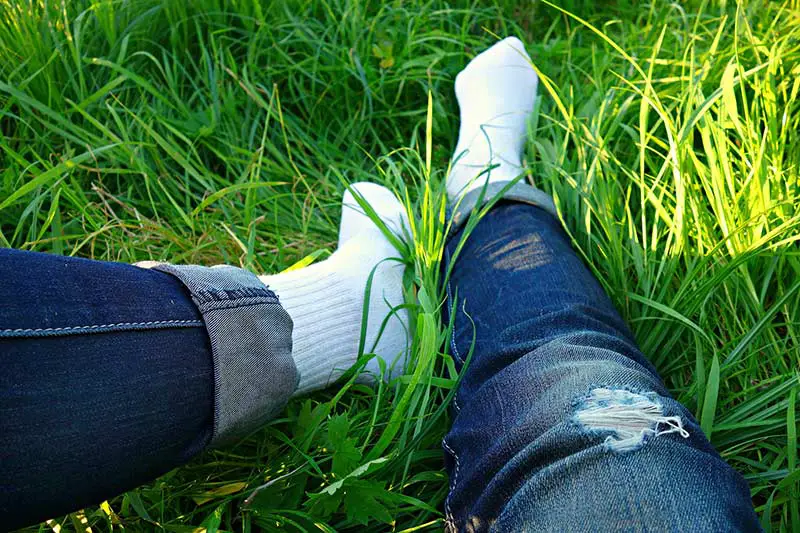
Health of Grass
The most influential factor that affects how soft grass feels on bare feet is the grass’ overall health. Unhealthy grass of any species will feel rough, prickly, and generally unpleasant to walk on.
Not only does unhealthy grass feel rough underfoot, it will also look unsightly and patchy. Grass in this condition is more vulnerable to disease, pests, heat and drought, and other stressors. To maintain healthy grass, it’s crucial to keep up with a full lawn care routine; this includes regular watering, mowing, and fertilization, and aerating and dethatching the lawn when necessary.
Type of Grass
Different grass types have different characteristics, and one such characteristic is softness. There are some grass types that have a rough, coarse texture, while others are naturally soft and fine.
You should first look at the species of grass you’re growing to understand whether it’s a variety that is naturally soft underfoot. If you’re growing a species with a naturally rough texture, it may not be possible to achieve soft grass; these grasses will feel coarse even with the most meticulous of lawn care routines. If this is the case, the only option is to remove the old grass and reseed the lawn with a soft grass species.
Density of Grass
Another characteristic that varies between species is grass density. The natural density of your grass species will impact how soft it feels on bare feet. Generally speaking, denser grass varieties tend to feel softer than those that grow sparsely.
A healthy lawn full of a dense grass species will feel like a plush carpet underfoot. On top of this, a lawn full of denser grass will be able to better choke out the growth of invasive lawn weeds. The only caveat of a denser lawn is that dense grass can be more difficult to mow; it’s therefore important to keep up with a regular mowing schedule if you’re growing a dense grass variety.
Softest Lawn Grass Species
When choosing a soft grass type for your lawn, you must pick a species that suits your climate. You’ll either require a warm-season grass or cool-season grass type; the softest warm-season grasses include zoysia grass, buffalo grass, and Bermuda grass, while the softest cool-season grasses are Kentucky bluegrass and perennial ryegrass.
Softest Warm-Season Grass Types
Warm-season grasses are typically found in the south and the warmer southern transition states in the US. These grasses begin their active growth period in the late spring, continuing to grow throughout the summer. The softest warm-season grass types are zoysia grass, buffalo grass, and Bermuda grass.
1. Zoysia Grass
Zoysia grass is a warm-season grass common to lawns in the southern states and transition regions in the US. This grass type is very popular as it creates a dense, lush lawn that naturally chokes out weed growth and tolerates high amounts of traffic.
The density of this species also makes it one of the best choices for those seeking soft grass. There are two varieties of zoysia grass, either fine or wide-bladed cultivars. If you want a lawn full of soft grass, you should opt for a finer-bladed variety of zoysia grass.
2. Buffalo Grass (Turf-Type)
Buffalo grass is a native warm-season grass type originally used as a pasture grass in the Great Plains. The newer, turf-type varieties of buffalo grass are now a common lawn grass. This grass thrives in full sun, and infrequent mowing will create a dense lawn with a natural look.
Due to its fine leaf texture, turf-type buffalo grass is another excellent choice for a warm-season lawn full of soft grass. Additionally, buffalo grass has been credited for its high water efficiency; this characteristic means that you won’t need to water your lawn as often as you would with other types of grass.
3. Bermuda Grass
Bermuda grass is another warm-season grass type that can create a thick, dense lawn. This grass requires full sun and has an aggressive growth habit, giving it a voracious ability to spread. Bermuda grass is also the best choice for high-traffic lawns as it can withstand a lot of wear and tear.
There are different varieties of Bermuda grass, with most varieties ranging in leaf texture from fine to medium; for the softest lawn, you should choose a fine-bladed variety of Bermuda grass.
Softest Cool-Season Grass Types
Cool-season grasses grow best in the northern and cooler transition states of the US. These grasses grow most actively in the spring and fall. The softest cool-season grass types include Kentucky bluegrass, perennial ryegrass, and no-mow fescue varieties.
1. Kentucky Bluegrass
Kentucky bluegrass is one of the most popular choices of turfgrass for cool-season lawns. This grass is a great choice if you want a hardy cool-season grass that will withstand traffic; Kentucky bluegrass has a great spreading ability and can repair itself easily when damage occurs.
For those in cooler regions looking for a soft grass type, Kentucky bluegrass is a prime candidate. This grass has a fine to medium blade texture that makes it feel soft underfoot. You can also blend Kentucky bluegrass with other cool-season varieties, e.g. perennial ryegrass, to create an even softer lawn.
2. Perennial Ryegrass
Perennial ryegrass is another popular turfgrass in the northern and cooler transitional states of the US. This grass has a fast germination rate and a high resistance to foot traffic. It’s common to plant perennial ryegrass alongside other grass varieties to take advantage of these characteristics.
If you want a perennial ryegrass lawn, it’s best to blend several different cultivars rather than one single variety only. This will create a higher-quality lawn with better disease resistance. Again, you could also plant perennial ryegrass alongside other cool-season soft grass types for a well-rounded lawn.
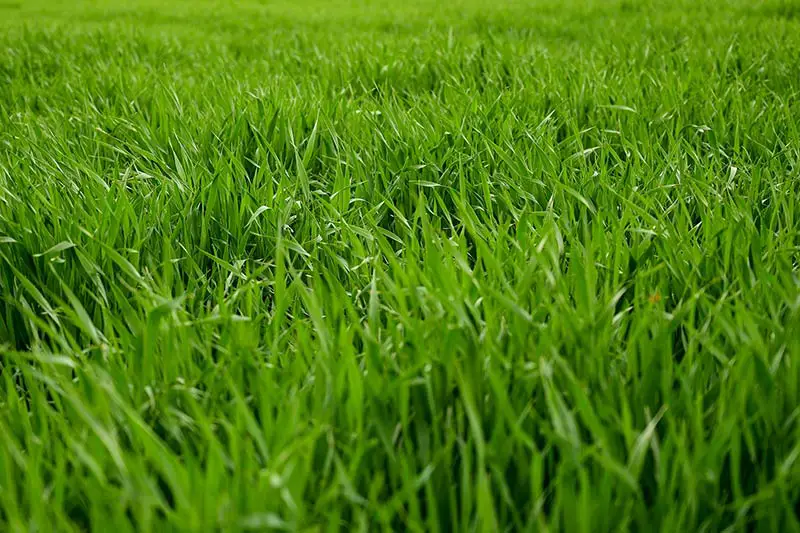
How to Make Grass Soft
Test Your Soil
The healthier your grass, the softer it will feel on bare feet. And, the first step toward healthier soil is to understand its current condition in terms of its nutrient content and soil pH. Knowing this information about your soil will allow you to choose the best amendments to suit your lawn’s particular needs.
To find out its current nutrient content and pH level, you should test your soil. There are two ways in which you can go about testing your soil; you can either test your soil yourself using an at-home test kit or send a sample off for professional testing.
Conducting a DIY soil test at home is a cheap and easy way to find out instant information about your soil; all you need to do is take a sample of your soil and follow the instructions on the kit. On the other hand, you can learn highly accurate information about your soil via a professional soil test. This is a service likely offered by your local extension office either for free or for a small fee; they will test your soil for you, before providing you with the test results and guidance specifically for your lawn.
From the results of your soil test, you will then have an understanding of its pH and nutrient content. This information will enable you to decide which fertilizer is best for your lawn and which pH-adjusting materials it may require.
Weed Control and Prevention
Weed control and prevention is a vital step toward achieving a healthy lawn full of soft grass. Not only do weeds impact the health of your lawn, they can also make it unpleasant to walk on barefoot; this is particularly true for weeds like stickers and stinging nettles.
To treat mature weeds, you’ll need to take appropriate control measures for the type of weed you’re dealing with. This could involve hand-pulling or treating the soil with a suitable grass-safe herbicide. Removing these weeds will allow more space for your lawn to grow while making your grass soft underfoot.
To prevent weeds from becoming established, you should instead use a pre-emergent herbicide. These herbicides work to prevent weed growth by killing weed seeds before they get a chance to germinate. You must therefore apply these herbicides in the spring in order for them to be effective. Take note that pre-emergent herbicides will also kill any grass seed you lay after application; wait for the recommended time before attempting to plant any new grass after using a pre-emergent treatment on your lawn.
Dethatch Lawn when Necessary
A thick thatch layer will block water, nutrients, and air from reaching the grass’ roots. As a consequence, the grass’ health will suffer, leaving you with a crunchy lawn that feels uncomfortable to walk on barefoot.
Thatch is the layer of decaying organic matter that sits beneath the grass blades and atop the soil surface. A small amount of thatch will not impact grass health, and can actually be beneficial for the grass. However, over time, this layer accumulates on your lawn, forming a barrier over the underlying soil. Your thatch layer will become an issue for your grass when it reaches over ½ inch in thickness
To reduce a thick thatch layer, you will need to occasionally dethatch the lawn. This process involves using a tool such as a rake, dethatching mower attachment, or motorized dethatching machine on your lawn. How often you dethatch will depend on your grass type; some varieties will only require dethatching every 3 to 5 years, whereas others will benefit most from annual dethatching. It’s best practice to monitor the thickness of the thatch layer in your lawn and dethatch it as necessary.
Water Lawn Deeply
Proper watering is another essential step toward having healthy, soft grass in your lawn. While different turf types have slightly different watering requirements, all grasses benefit from deeper, infrequent watering.
Generally speaking, most turfgrasses require 1 to 1½ inches of water per week. If you were to break this amount up into shorter, daily watering sessions, it would cause your grass to grow shorter roots. Grass plants with shorter roots are more susceptible to stressors like heat and drought, pests, and disease.
Instead, you should add this amount of water to your lawn in 1 to 2 deep watering sessions weekly. Watering more deeply will encourage the grass’ roots to reach deeper into the soil; a deeper root system is better able to support the grass during periods of stress. This will leave you with a healthy lawn full of soft grass that will better withstand unfavorable growing conditions.
Mow Lawn Properly
Another key element of your regular lawn care routine is proper mowing in accordance with your grass species. You need to cut your grass to its ideal mowing height to maintain its healthy growth and soft feel.
Ideal mowing heights vary between grass species; you’ll need to do some research into which height your turf prefers. You should also follow the ⅓ rule when mowing your lawn, taking off no more than ⅓ of the grass’ total height per mow. Furthermore, you must ensure that you always mow with sharp mower blades. Following all of these tips will maximize the health of your lawn, ultimately leaving you with soft grass.

